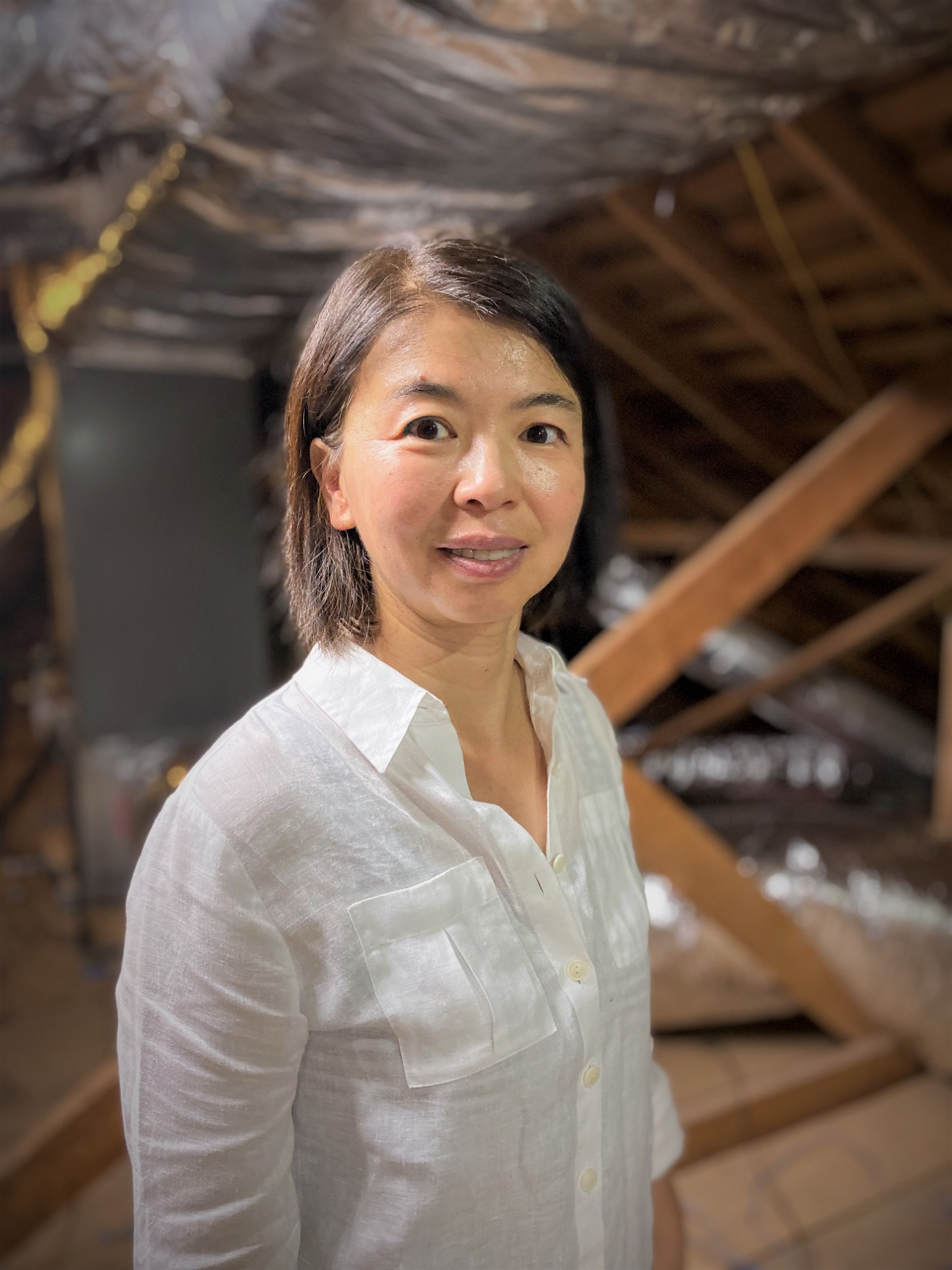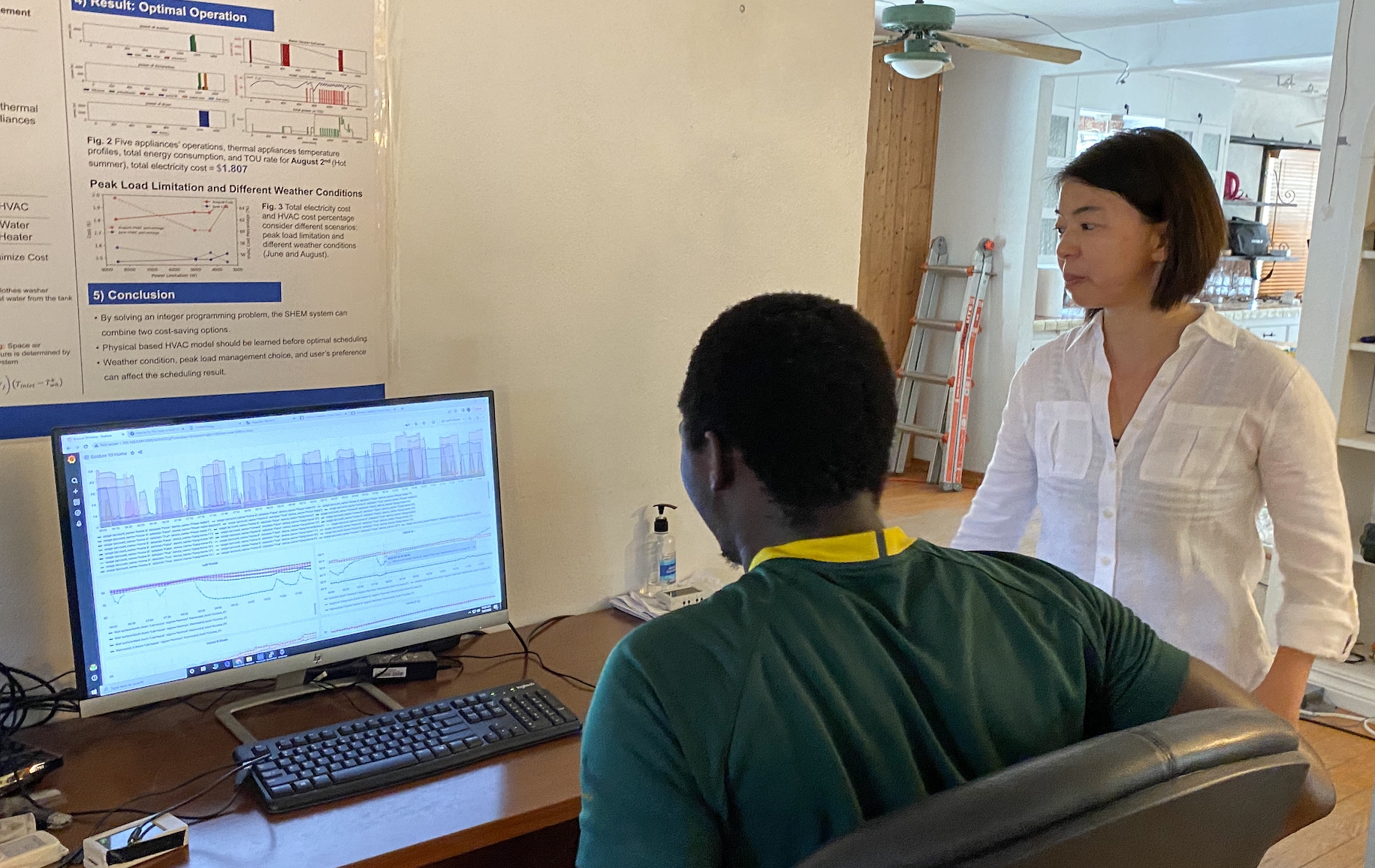

University of Oklahoma engineer Li Song, Ph.D., never imagined her research would occur in a 1940’s bungalow. After all, for more than 20 years she has primarily studied thermal science in large-scale complex buildings such as hospitals, office buildings and towers.
However, the mechanical engineering professor saw an opportunity a few years ago. Only on the market since 2017, Song thought that smart thermostats – Wi-Fi thermostats – showed the potential for further investigation. She noticed hundreds of computer scientists were collecting data about smart thermostat usage, but few were studying their actual physical systems.
To begin, Song needed a laboratory. Enter the bungalow located just a block south of the OU campus. The home is made possible by research funding from the Oklahoma Center for Advancement of Science and Technology, Pacific Northwest National Laboratory and OG&E with additional support from the Department of Energy.
Before even converting the bungalow to a lab, Song had initiated the development of a self-learning home thermal model. At first, the model was limited to homes with air conditioning and gas-furnace heaters but now that has grown to include homes with electric heat pump systems. The model can automatically identify the model parameters with minimum data needed and can also precisely predict the space temperature.
Today, there is one patent and 12 home thermal models – 10 residential homes in Oklahoma, one in Miami, Florida, and one in Richland, Washington. Song keeps the locations of the homes confidential because of strict research guidelines.
“When we first started in 2019, we had all this excitement on paper yet, nothing had been implemented,” Song said. “We came to an empty house. We were not sure we could upgrade it to a cloud-based, remote-accessible research facility to do our experiments on. Now, we’ve done all that.”
The BEEL Lab House, Building Energy Efficiency Laboratory, is the only such research lab in the Gallogly College of Engineering. It’s about 1,400 square feet and completely instrumented and up to the required standard. Only in operation for three years, the facility already has a long-lasting impact.
“Having this residential home has allowed OU engineering students and researchers to embrace innovation, design and cutting-edge technology to develop new solutions in smart building systems,” Song said. More than 20 students have completed research projects ranging from capstones and undergraduate research to Ph.D. dissertations.
Because the home is remotely accessible students and researchers were able to conduct their experiments even during the pandemic, Song says.
“My students did not have to be physically in the house, but they were still able to carry on with their projects remotely. The research of many students at OU got postponed during the pandemic, but we were able to keep moving forward.”
There are several other advantages to working in a residential home and Song stresses that the BEEL Lab House is a “living laboratory for community outreach.” She has partnered with researchers at the University of Miami and Pacific Northwest National Laboratory.
“Successful experimental validation in the BEEL Lab House has accelerated the technology implementation to many areas including tribal communities in Oklahoma with the support from OU Institute for Resilient Environment and Energy Systems,” Song said.
“The BEEL Lab House has made the technology validation, transfer and real-world impact possible.”
To learn more about the Gallogly College of Engineering at the University of Oklahoma, visit www.ou.edu/coe.
By Lorene A. Roberson, OU Gallogly College of Engineering